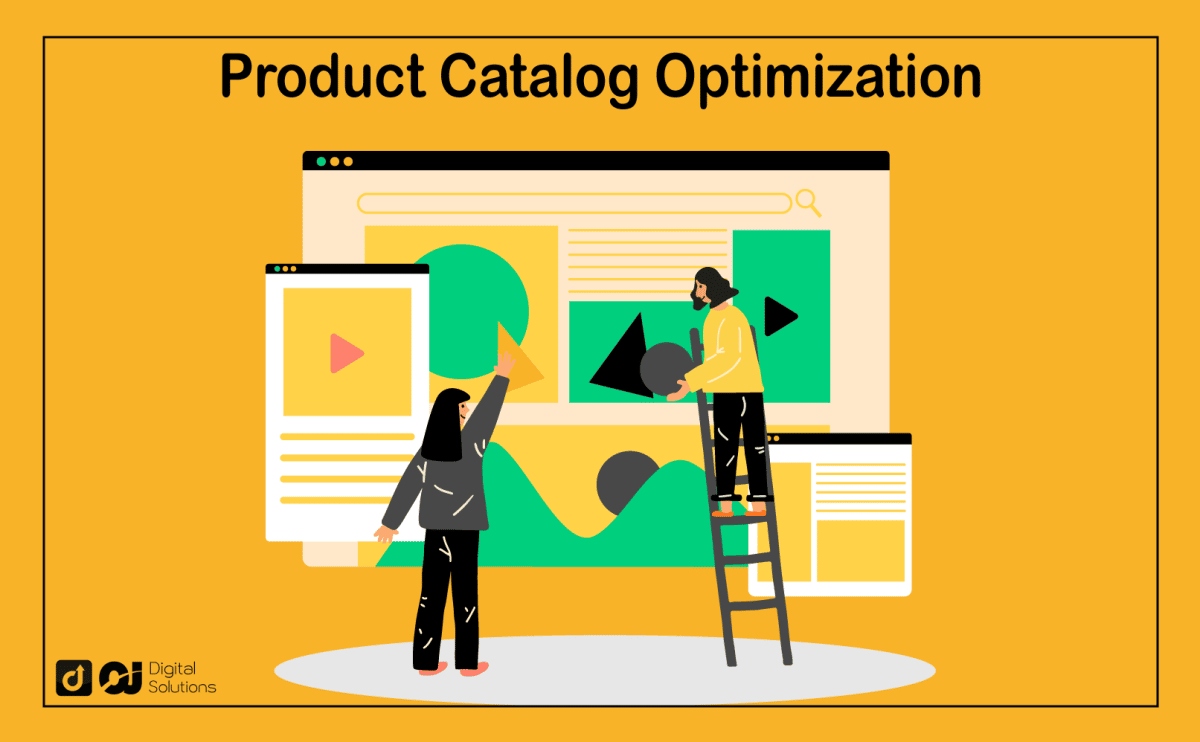Product catalog optimization is the key to e-commerce success.
In the rapidly growing market, you need a carefully crafted digital product catalog and an efficient online store.
If you need help with e-commerce catalog management, you’ve come to the right place.
This guide explores 11 essential strategies for effective product catalog optimization. I’ll also discuss its critical role in launching your business to success.
Let’s begin.
11 Best Practices for Product Catalog Optimization
Here are 11 ways to optimize your product catalog and improve business performance.
1- Maintain Data Integrity.
As an e-commerce solution, successful product catalog optimization depends on data integrity. I can’t overemphasize the importance of complete and accurate data in attracting and keeping customers.
Nobody wants to check product pages full of errors in product details and mismatched images. That’s a surefire way to send potential customers to your competitors’ sites.
Building a better brand story and earning buyers’ trust begins with relevant product data that tells customers exactly what they need to know before purchasing.
Customers today are meticulous. Before buying a product, they take the time to research and compare it with similar items.
Thus, your digital catalog data must be consistent, allowing customers to make in-depth comparisons.
2- Create SEO-Friendly Digital Catalogs.
The fierce ecommerce competition calls for optimizing your listings and online product catalogs. Doing these will help you rank higher on search engine results.
How do you do that?
– with keywords.
In my Amazon listing optimization guide, I also discussed using keywords to increase your search visibility. Time and time again, I’ve witnessed how targeting the right keywords led to an exponential boost of visitors and sales.
Take the time to research relevant keywords related to your products and incorporate them in a natural and easy-to-read way.
3- Use Standardized and High-Quality Images.
People are visual creatures, especially regarding online shopping. After all, online shoppers don’t have the luxury of holding a product in their hands for a full inspection.
If photography isn’t your strong suit, hire a professional product photographer to take the best possible photos of your items.
4- Practice Real-Time Inventory Management.
Have you ever searched for an item and placed an order on an ecommerce platform, only to find it’s out of stock? It can be pretty frustrating to waste time and effort, right?
Retailers should update their product catalog data regularly to avoid these situations.
Learn from my experience, where I lost a sale and a potential lifelong customer because of an outdated inventory data.
If you want to deliver on your promises, update your data in a timely manner. Accurate product data relies on good inventory management and tracking.
This practice also helps minimize risks related to inventory mismanagement, such as understocking or overstocking.
5- Centralize Your Product Data Storage.
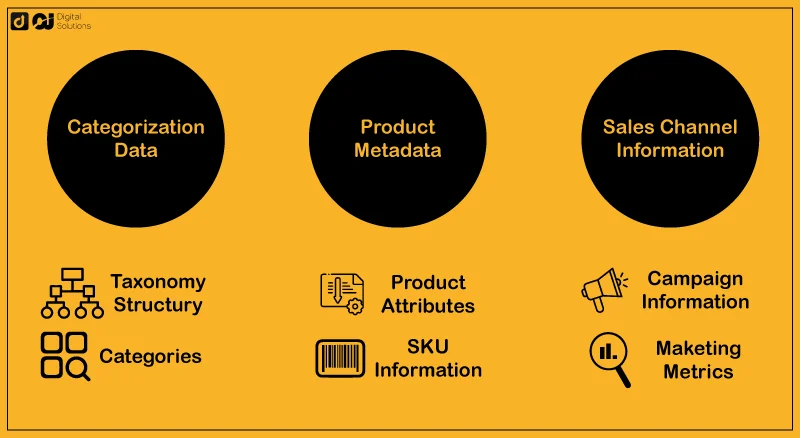
Your data must be accessible online.
Consolidating your data allows you to streamline your catalog management and create a logical and systematic workflow.
Centralizing product data storage is even more critical for businesses that sell products across multiple channels.
An omnichannel approach calls for an e-commerce solution addressing the following needs:
- Consolidation of complex product catalogs
- Analysis reports with information for different sales channels
- Prevention of data duplication and simplified access to necessary information
- Cost-effective software system for analysis of data from various sources
- Reduction of data quality issues that affect operations
These endeavors would be difficult to execute with manual effort.
Use a tool to manage your product catalog, like a PIM system.
A product information management (PIM) system is software that enables you to collect and manage your product catalog data in one platform.
This tool is the most efficient way to track the information required to sell your products across all your sales channels.
6- Promote Cross-Selling and Upselling Opportunities.

Retaining customers is essential, saving money and building loyalty.
Keeping an existing customer costs five times less than attracting a new one. Therefore, it makes sense to focus on customer retention just as much as customer acquisition.
Customer retention is why cross-selling and upselling to customers are essential. This marketing strategy gives customers more value for their money, which they will appreciate.
You can also earn additional revenue and build brand loyalty with minimal extra effort.
7- Conduct Customer Journey Mapping.
Many people prefer shopping on online marketplaces because of convenience.
Shoppers are now more demanding and expect a fuss-free online shopping experience.
The question is: how do you keep up with these demands as an ecommerce retailer?
It’s simple; use customer journey mapping to gain insights into customer expectations, preferences, pain points, and requirements.
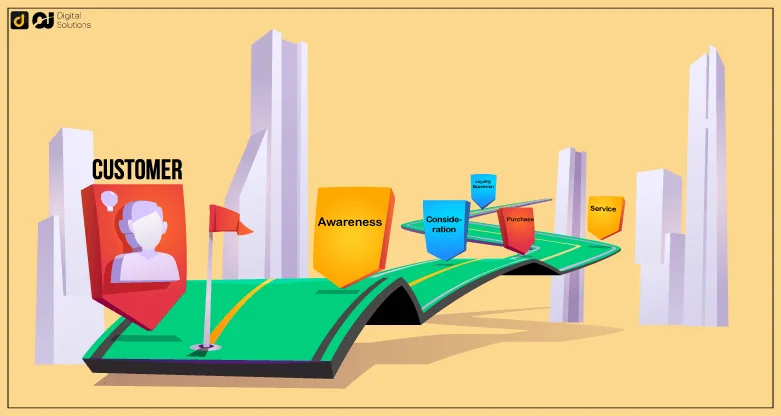
A customer journey map shows you these layers of a shopper’s ecommerce experience.
- Awareness
- Consideration
- Acquisition
- Service
- Loyalty
Knowing these multiple touchpoints on the map allows you to provide the right products at the exact time and place your customer wants them.
8- Make Your Catalog Mobile-Friendly.
Shoppers hop on ecommerce platforms using various devices.
If your site isn’t mobile-optimized, they’ll likely switch to a different seller or marketplace. Customers are five times more likely to quit if a site isn’t optimized for mobile devices.
Here are some quick tips to ensure a fantastic user experience across all devices:
- Use large fonts for easier readability.
- Arrange fewer products on each page to display larger and better-quality product images.
- Additional product information should be accessible with one click.
- Make call-to-action (CTA) buttons visible and pop out of the page.
Consider how your catalog tool shares across different media platforms.
An effective catalog tool should be accessible across social media, catalog-sharing sites, and email, giving you many avenues for converting visitors into customers.
9- Integrate Catalog Management With Other Systems.
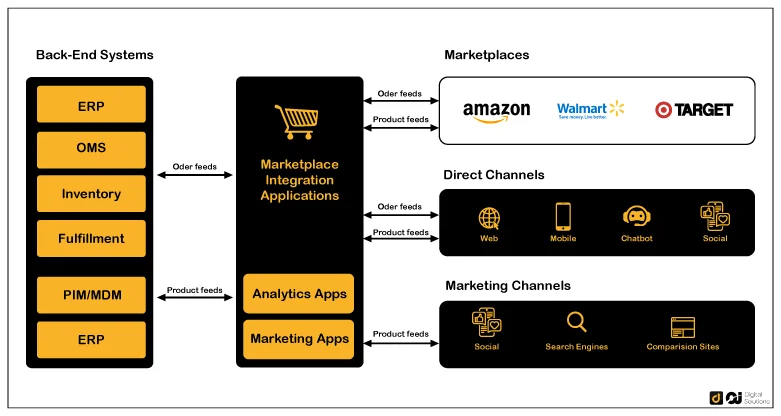
Integrating your ecommerce product catalog management with other systems is another way to enhance operations, drive more profits, and build solid customer relationships.
An enterprise resource planning system (ERP) updates inventory levels automatically.
An email service provider (ESP) can improve your conversion rates by sending automated messages to customers based on product catalog data.
Messages you send can include order confirmation emails, abandoned cart recovery, and targeted emails to previous customers.
10- Map Your Product Catalog Management Process.
Many businesses have multiple stakeholders. A supply chain typically consists of various parties like designers, producers, and couriers.
It can be challenging to stay in control in a setup with many variables.
One way to stay in charge is to map your catalog management process. Like the customer map, catalog management mapping gives you a clear view of all touchpoints.
Proper mapping lets you identify which stakeholder to contact when updating your product catalogs and getting information regarding schedules and capabilities.
11- Balance Your Digital and Physical Catalogs.

Consumer behavior varies between physical and digital environments.
Offline stores offer buyers a better experience simply because customers can physically interact with the product. Your product catalog should appeal to all five senses: sight, touch, taste, sound, and smell.
Online stores lack the chance to physically interact with products, so they require detailed descriptions and images for product listings.
You should also consider that customers sometimes browse online before going to a physical store. This approach is called Research Online, Purchase Offline (ROPO) and has dramatically influenced customer behavior.
Finding the right balance between your physical and digital catalogs is essential for maintaining consistency and ensuring the two areas complement each other.
Why Is Product Catalog Optimization Important?
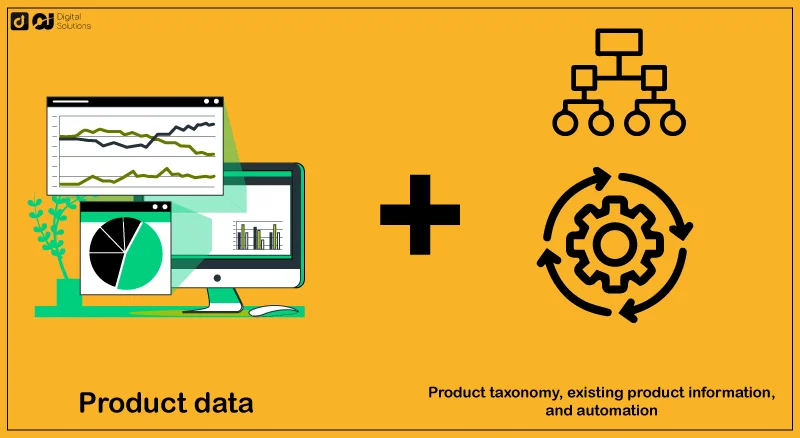
Product catalog optimization is essential for ecommerce businesses because it leads to better search rankings, boosting conversion rates.
It also minimizes product returns. Data suggests 22% of customers return their purchases because the products look different in person than on the website.
The likely culprit is unoptimized product listings or product catalogs.
Your product data should give customers detailed information and a clear picture of what they’re getting.
Optimized product cataloging prevents unpleasant surprises like product returns. You’ll also earn a reputation as a trusted brand—it’s a win-win situation.
Frequently Asked Questions (FAQs)
What Is Product Catalog Management?
Ecommerce product catalog management means organizing product data to ensure that it’s accurate and up-to-date.
Each item you sell has unique product data, including product descriptions, titles, prices, images, product tags, and more.
Product catalog management involves creating a centralized product data repository to standardize your data across multiple sales channels.
This strategic process allows for efficient product inventory tracking across different channels. It also streamlines customer decision-making. Product catalogs display all the information customers need to make purchase decisions.
It also provides valuable insights into customer behavior to help you develop behavioral marketing campaigns.
What Is Product Catalog Optimization?
Product catalog optimization falls under the umbrella of product catalog management. It involves optimizing your data to make the customer experience smooth and pleasant.
The ultimate goal is to improve conversion rates, earn more sales, and build trust in buyers.
Optimized online product catalogs lead to better SEO results and more organic traffic. After all, the higher your product ranks on search engines, the more likely your target audience will see it.
The Bottom Line
Ecommerce product catalog management is vital to streamlining your business operations and enhancing customer experience.
At its core is the organization of existing data, optimization strategies, and constant updates to keep data accurate. This process is even more crucial for omnichannel retailers that must be consistent across all sales channels.
Hopefully, this guide has shown you the best ways to manage your product catalogs and make them attractive to buyers.
To maximize your online product catalogs, you should also learn how to write product descriptions for your ecommerce store.

